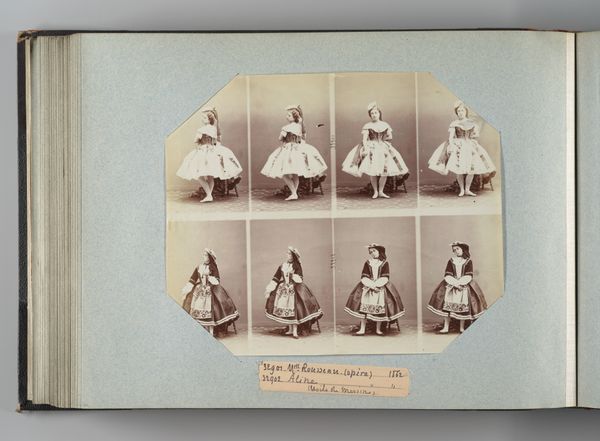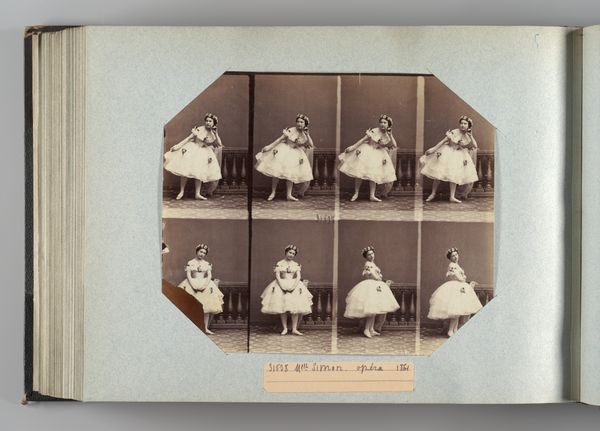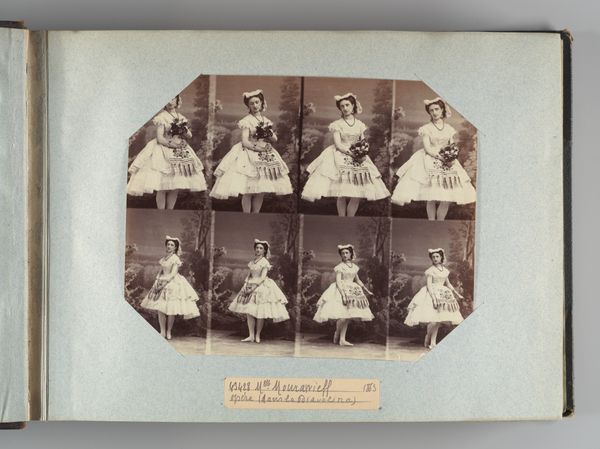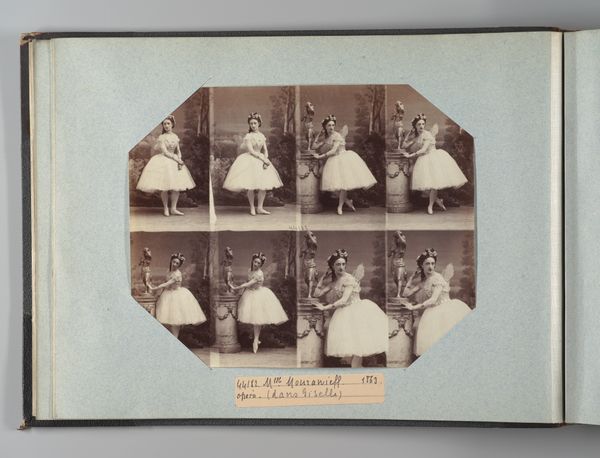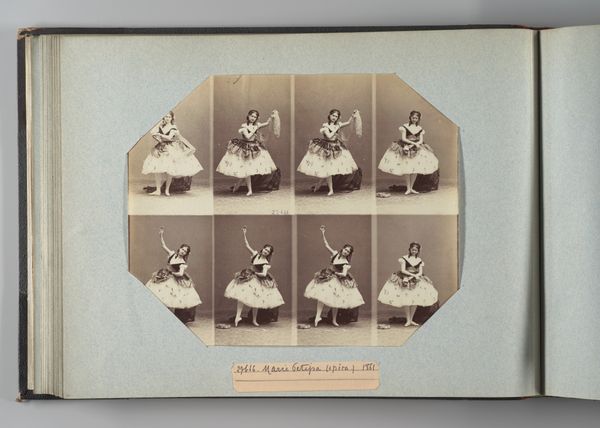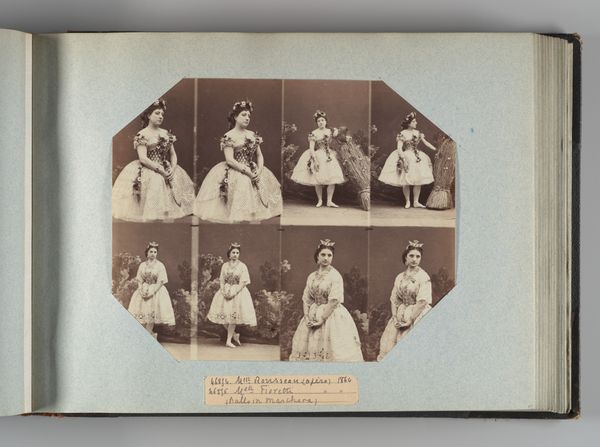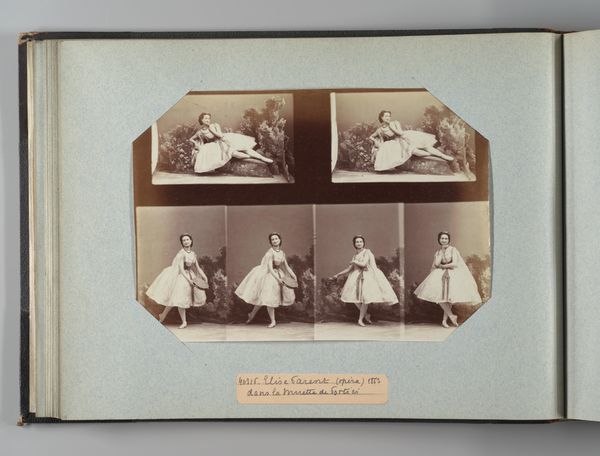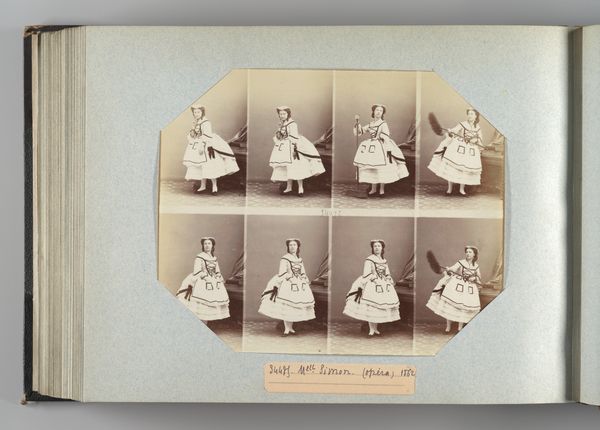
daguerreotype, photography
#
portrait
#
daguerreotype
#
photography
Dimensions: Image: 7 3/8 × 9 1/4 in. (18.8 × 23.5 cm) Album page: 10 3/8 × 13 3/4 in. (26.3 × 35 cm)
Copyright: Public Domain
Curator: This is a daguerreotype, a very early photographic process, made by André-Adolphe-Eugène Disdéri in the 1850s or 60s. It's titled “Mlle Pancaldy - Italiens,” and you can find it here at the Met. Editor: It's lovely, almost ghostly in its pallor. The subject, presumably Mademoiselle Pancaldy, is repeated four times as a dancer, and then in portraiture. The entire octagonal layout is like a jewel. Curator: What I find fascinating is Disdéri's position within the history of photography. He popularized the carte de visite, which democratized portraiture, making images accessible to a wider public. This multi-image presentation is typical of that format. Editor: And the carte de visite format amplifies the geometric quality, a study in variations. Look how the softness of her tulle contrasts with the precise edges of the plates. The sepia tones create a feeling of romantic nostalgia. Curator: Absolutely, and the ability to produce multiple images cheaply also shifted the socio-political power of the portrait. It wasn’t just for the elite anymore, this kind of item made stars into ordinary household items, but was the reality? The reality may be the image, rather than the person. Editor: Consider the formal contrast too, between the posed portraits and the dynamic shots of her dancing. One evokes classicism and theatrical tradition, but the others show us the human caught within that context. Curator: I’m wondering about how photography was perceived then; this dancer would have understood her own performance in terms of public appeal, because her image could exist beyond just physical encounters, it could represent power structures too, the male gaze. Editor: Precisely, so despite what I first perceived as softness in this image, you see how many rigid angles it throws in order to produce an experience of art meeting capitalism, with the woman dancer stuck in between. Curator: It’s so poignant when you see the social structures revealed through this medium. I’ll never be able to see it as just a photo of a dancer again. Editor: Indeed. There's an almost eerie quality that now seems less romantic and more revealing. The stark contrast highlights photography's power to freeze performance, while letting us witness social mechanics from ages away.
Comments
No comments
Be the first to comment and join the conversation on the ultimate creative platform.


